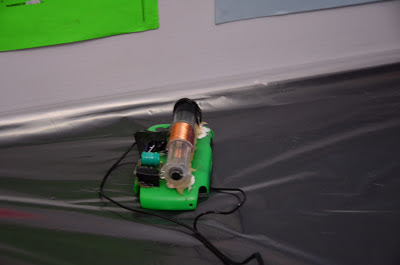2011
Eskom Expo for Young Scientists overall winner, Palesa Masuku, has
been appointed a counsellor at the prestigious London International
Youth Science Forum (LIYSF).
 |
| Palesa Masuku |
In
addition to being the joint winner of the Eskom Best Female Project,
as part of her prize Masuku also received the opportunity to travel
to the Science Forum in September 2012, which is attended annually by
some of the world’s best young achievers in science, technology,
engineering, mathematics and innovation.
Her
school, JM Ntsime High School, situated in a rural area near
Rustenberg, also won the Eskom Best Rural High School award and
received a mobile science kit valued at over R25 000 in 2011.
The
LIYSF is a unique event and opportunity for top young science
students aged 17 to 21 years old from around the world. Since 1959,
LIYSF has welcomed young scientists to come together to learn,
exchange views and opinions, and share knowledge.
Students
also get the chance to visit some of the world’s leading university
departments and industrial sites. A key aspect of the programme is
the plenary and specialist lectures hosted by some of the world’s
most renowned scientists who speak on a broad range of pertinent and
inspiring topics.
Masuku,
who wowed the Eskom Expo for Young Scientists judges last year with
her idea of using marula fruit as an alternative energy source, says
she is “over the moon” and will be grabbing the opportunity with
both hands.
“Right
now I feel very proud, honoured and privileged to be part of
something so great. I can’t wait to play an even greater part in
other scientists’ lives and to help and guide them to discover
their talents and exciting career paths in science,” says Masuku.
Masuku,
who had never been overseas before, says London is not too different
from South Africa, but the experience was great and the opportunity to
learn and share ideas with young scientists from all over the world,
even better.
 |
| Palesa Masuku |
Her
role as a LIYS counsellor in 2013 will involve helping to take
care of and guide other young scientists both at Eskom Expo for Young
Scientists International Science Fair and the London International
Science Fair.
Dr
Steve Lennon, Eskom Group Executive on Sustainability, says Eskom is
delighted and proud to be playing a part in grooming Masuku.
“Palesa
is an excellent ambassador as she is a young person who has
demonstrated a consciousness of the challenges faced by the people in
her community, as well as the motivation to find creative solutions
to those problems. She is also committed to helping other bright
science minds such as herself and we are thrilled with her
accomplishments and the maturity she has displayed since we first met
her.”
Competition: win a copy of Supernova!
What are you doing to save energy? If you are 18 and under, let us know by leaving a comment below this post, or by emailing andrea@bkpublishing.co.za. You can win a copy of Supernova magazine!



















.JPG)
.JPG)












